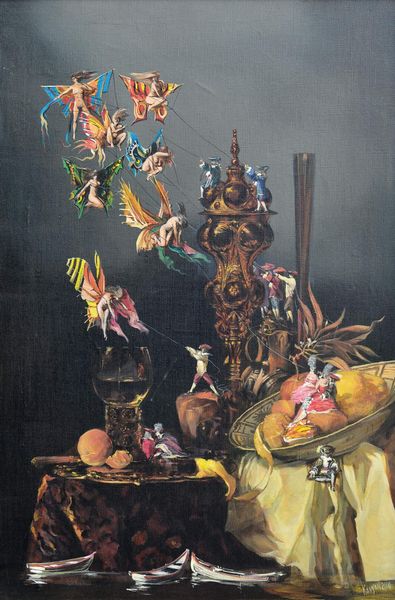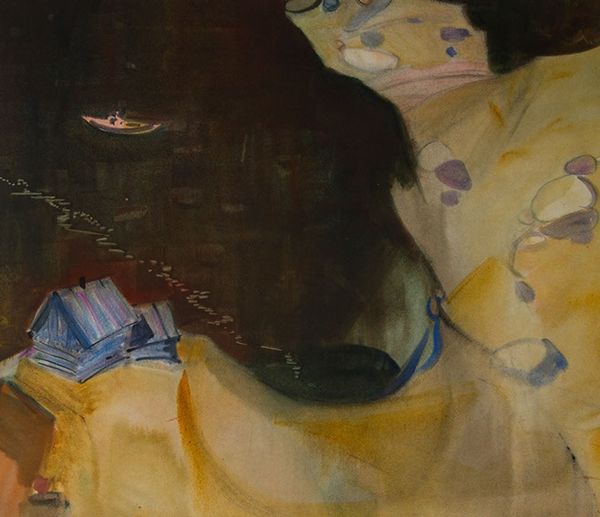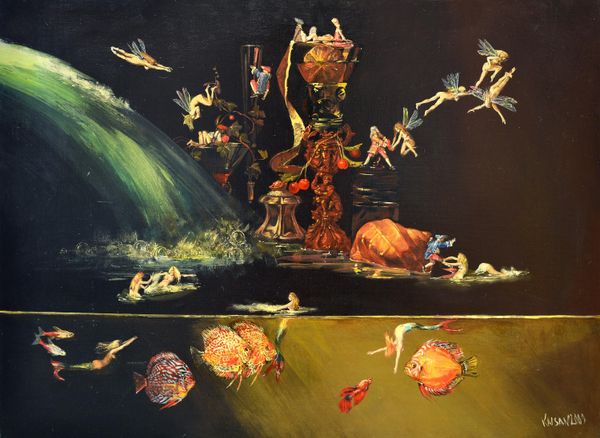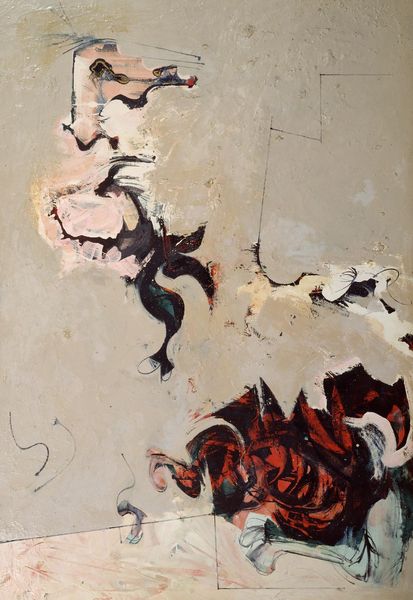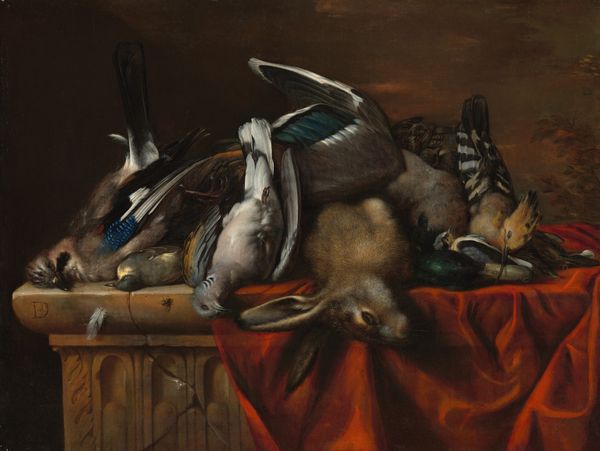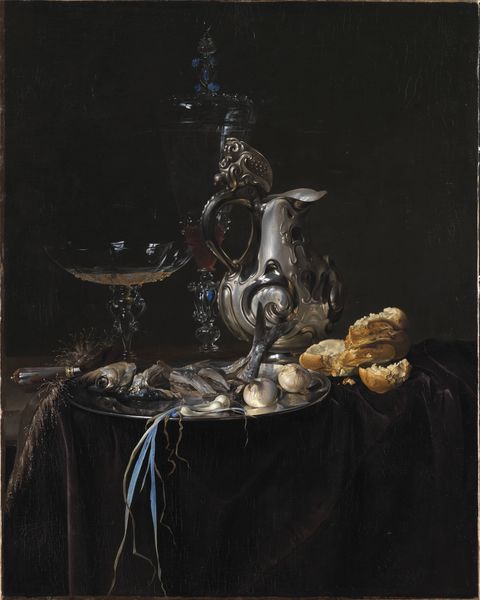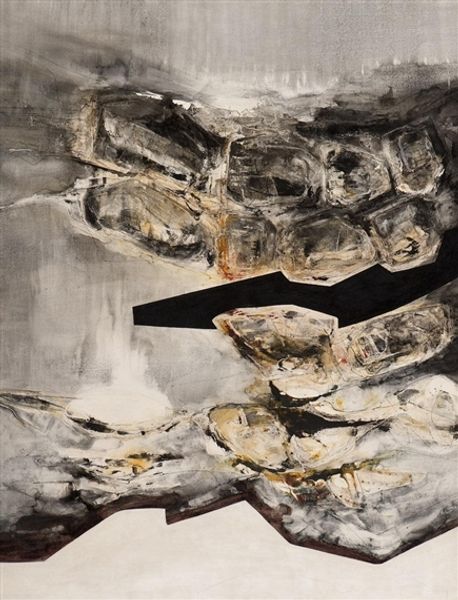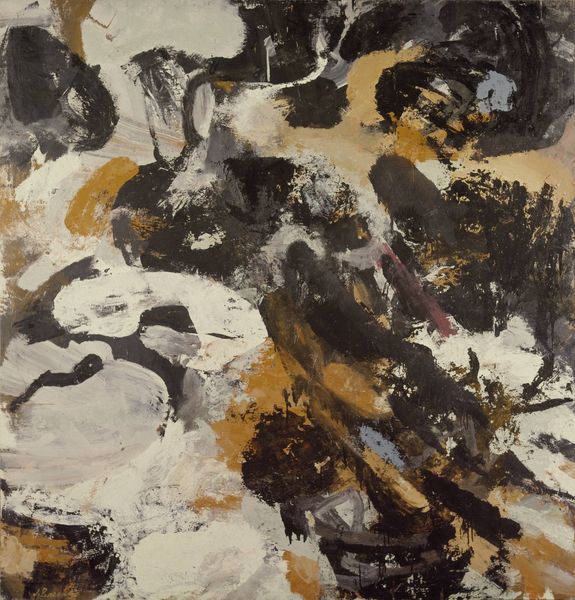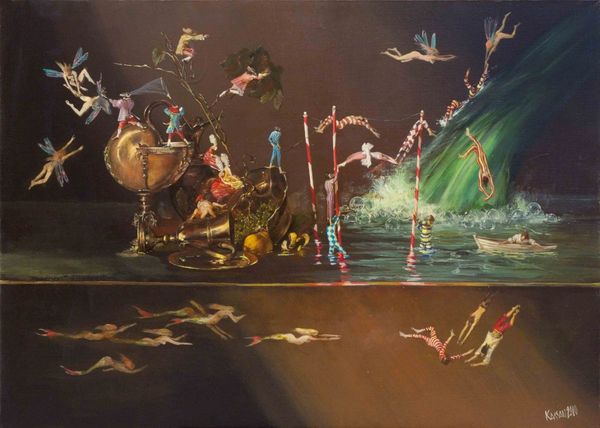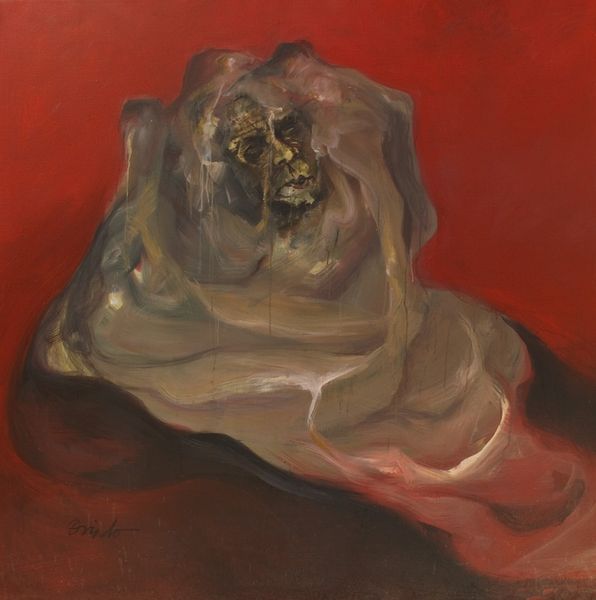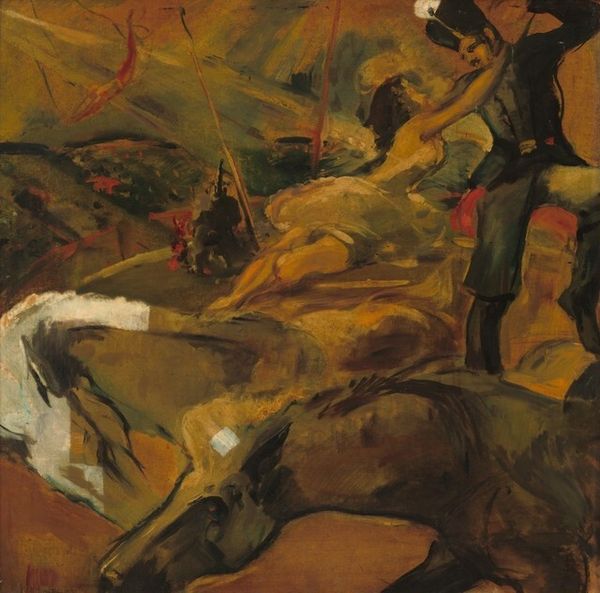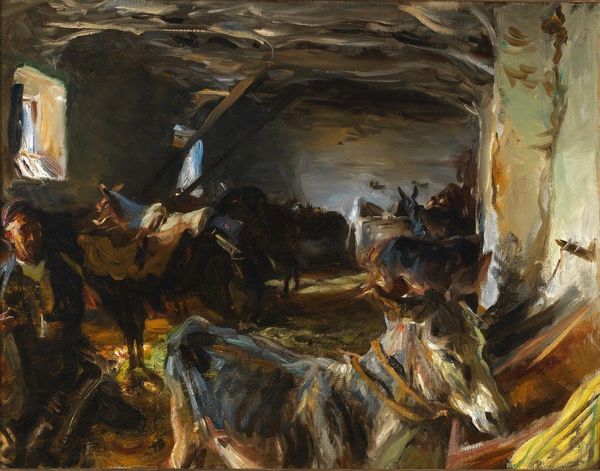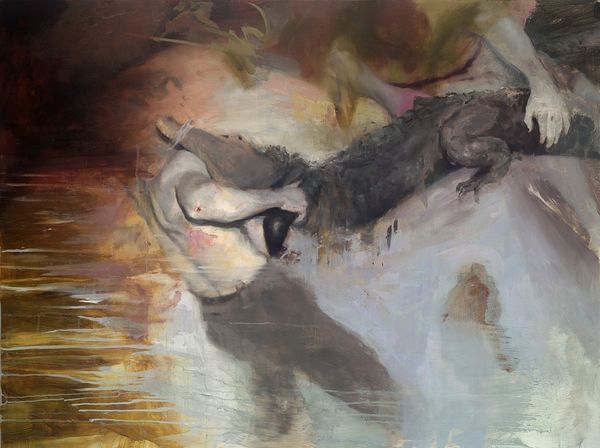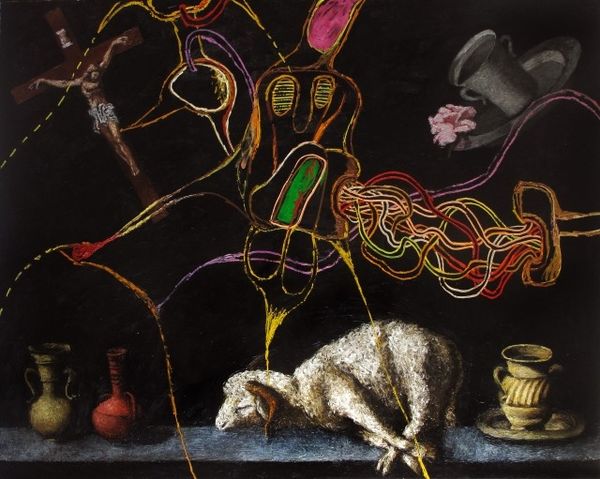
Dimensions: support: 763 x 1015 x 23 mm frame: 973 x 1225 x 82 mm
Copyright: © DACS, 2014 | CC-BY-NC-ND 4.0 DEED, Photo: Tate
Editor: Here we have Dorothea Tanning’s “Some Roses and Their Phantoms.” The flowers seem unsettling and almost alien. What do you see in this piece? Curator: I see a fascinating exploration of femininity and decay. Tanning, often associated with surrealism, uses these unsettling roses to perhaps challenge conventional notions of beauty and the objectification of women. Editor: Objectification? Curator: Consider the domestic setting, the table. Is it a stage? Are these roses, these women, presented for consumption, their beauty destined to fade? The "phantoms" suggest a lingering presence, a haunting reminder of what once was or what could have been. Editor: So, the wilting is less about death, and more about resistance? Curator: Precisely! Tanning reclaims that narrative of decline, imbuing it with agency. It’s not just about fading; it’s about transforming, haunting, and perhaps even disrupting the patriarchal gaze. We must consider how Tanning uses surrealism to disrupt gendered expectations. Editor: I never thought of it that way. I see so much more now! Curator: Exactly. Art becomes a powerful tool for social commentary when we understand its historical context.
Comments
tate 7 months ago
⋮
http://www.tate.org.uk/art/artworks/tanning-some-roses-and-their-phantoms-t07987
Join the conversation
Join millions of artists and users on Artera today and experience the ultimate creative platform.
tate 7 months ago
⋮
In this painting Tanning questions our expectations of still life painting, transforming a domestic table-top scene. Tanning plays with perspective and introduces mysterious forms and an insect-like creature. She wrote: ‘Here some roses from a very different garden sit?, lie?, stand?, gasp?, dream?, die? – on white linen. They may serve you tea or coffee. As I saw them take shape on the canvas I was amazed by their solemn colours and their quiet mystery that called for – seemed to demand – some sort of phantoms.’ Gallery label, August 2019
